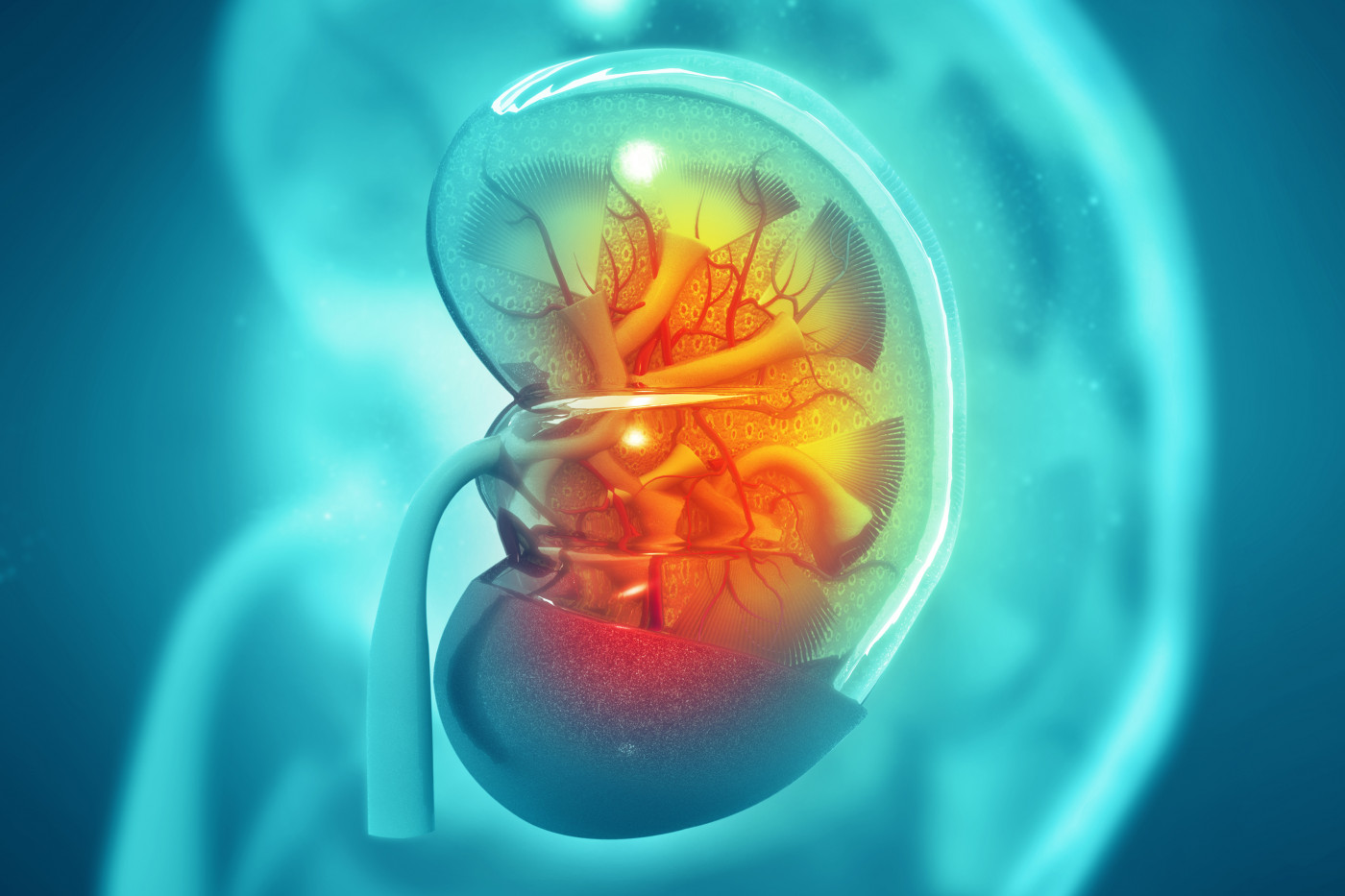Study: PRX-102 Is Safe, Slows Kidney Disease in Fabry Patients Previously Taking Replagal
Written by |

crystal light/Shutterstock
One-year treatment with Protalix BioTherapeutics‘ investigational enzyme replacement therapy PRX-102 (pegunigalsidase alfa) is safe, well-tolerated and appears to more effectively slow kidney disease progression in Fabry disease patients previously treated with Replagal (agalsidase alpha), results from a Phase 3 clinical trial suggest.
Patients also experienced a lowering in their plasma globotriaosylsphingosine (lyso-Gb3) levels — a biomarker of Fabry disease — after switching to PRX-102, further reinforcing its potential to lessen disease burden.
The findings were detailed at the 2020 Annual WORLDSymposium, held in February in Orlando, Florida, in the poster presentation, “Switching from agalsidase alfa to pegunigalsidase alfa for treating Fabry disease : One year of treatment data from BRIDGE, a phase III open label study.”
Like other enzyme replacement therapies (ERTs) for Fabry disease, PRX-102 works to replenish the levels of the enzyme alpha-galactosidase A, which is defective in patients with the condition.
This enzyme is responsible for breaking down a fatty molecule called globotriaosylceramide (Gb3), which builds up in patients, causing problems in several organs and tissues, including the heart, brain, and kidney.
PRX-102 delivers a fully functional copy of the human enzyme alpha-galactosidase A to patients. But the product is chemically modified in a way that makes it more stable than currently available ERT therapies, potentially allowing for more-spaced-out treatment infusions.
Also, unlike other approved therapies, which are produced in cells from mammals, Protalix uses genetically modified plant cells to produce its therapy.
The Phase 3 BRIDGE trial (NCT03018730) is an open-label, single-arm, switch-over study designed to assess the safety and effectiveness of PRX-102 in adult Fabry patients (18–60 years) who previously were receiving a stable dose of the approved ERT therapy Replagal for at least two years.
Its 22 participants were screened for three months while continuing on Replagal and then switched to 1 mg/kg PRX-102, administered via intravenous (into-the-vein) infusions every two weeks for one year. Those who completed the trial then could enter a long-term extension study and continue receiving PRX-102.
The trial’s main goal was to determine PRX-102’s safety, assessed as the proportion of patients experiencing adverse side effects related to treatment. Secondary measures included changes in kidney function, and levels of disease biomarkers.
The interim data presented at the WORLDSymposium is from the first 16 patients (of the 22 enrolled), ages 24 to 60 (nine men and seven women), who concluded the 12-month study. At the time of treatment initiation, and despite prior treatment with Replagal, patients still exhibited very low enzymatic activity, which translated into high levels of disease biomarkers.
Also, most patients experienced progressive kidney disease while on Replagal.
The progression of kidney disease usually is assessed as the annual change in the estimated Glomerular Filtration Rate (eGFR). Patients who experience yearly reductions of 3 mL/min/1.73m² (square meters) or less are considered to have stable disease, those who lose 3 to 5 mL/min/1.73m² are classified as progressive disease, and those with annual reductions of more than 5 mL/min/1.73m² have fast-progressing disease.
During the prior two years on Replagal, patients had been experiencing a mean 5.1 point reduction in their average eGFR per year. At the time of enrollment, six patients had stable disease, four had progressing disease, and the remaining six had fast-progressing kidney disease.
One of the trial’s therapeutic goals was to reduce the progression of kidney disease, putting progressive disease patients on stable disease, and causing those on fast-progressing disease to achieve either a progressing status or a decrease in progression by more than half.
That goal was achieved by 100% of patients with progressive disease, and by 67% of those with fast progressing disease. After one year of PXR-102 treatment, a total of 10 patients had stable disease, three had progressing disease, and three had fast progressive kidney disease. Over that year, the mean reduction in eGFR scores was of only 0.23 mL/min/1.73m².
Levels of plasma Lyso-Gb3 also decreased after initiating PXR-102 treatment and throughout the 12-month period. The benefits, however, were particularly evident in men, who also started the trial with much higher levels of this biomarker (53.6 nM) than women (13.8 nM).
Researchers also noted that the switch to PRX-102 was safe and well-tolerated, and that most patients continued to receive the treatment in the extension study. Final results from BRIDGE are expected by midyear.
“In addition to suggesting a positive safety and tolerability profile of pegunigalsidase alfa, these interim data indicate amelioration of the course of the disease,” Ales Linhart, a principal investigator in BRIDGE who presented the findings, said in a press release.
“While these results must be confirmed by the long-term data, all of the progressing patients and two-thirds of those in the ‘fast progressing’ group, to date, achieved the proposed therapeutic goals after switching to pegunigalsidase alfa, demonstrating substantial improvement in disease progression rate,” Linhart said.
Another ongoing Phase 3 trial, called BALANCE (NCT02795676), is assessing PRX-102’s safety and ability to prevent renal function decline in Fabry disease patients who switched from Fabrazyme (agalsidase beta).





